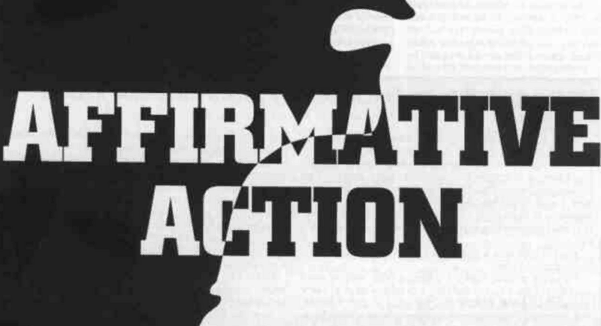How Can Dissidents Advance Nationalist Politics in America?
George Halstead, American Renaissance, September 2002
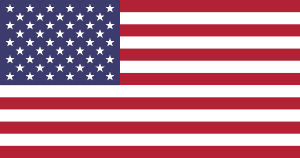
We read with increasing interest of the successes in Europe of “far right” immigration-control parties in Austria, Belgium, France, Denmark, Holland, and even in Britain. How could we achieve similar results in the United States?
The most recent European nationalist gains are largely a reaction to increasing anger over Third-World immigration and Muslim terrorism. Since we have these problems in America, why aren’t we seeing nationalist politics here? Americans are supposed to be politically savvy; we send political consultants all over the world. The events of September 11th clearly create an opening for politicians and parties smart enough to use them. What are the techniques and strategies that would work for us?
There are three different ways to send a racial message to politicians:
- Build racial/traditionalist blocs within the two main parties.
- Develop new kinds of political action committees to spread racialist ideas and support candidates who advance them.
- Build a racialist third party from one of the existing small conservative parties. These approaches are not mutually exclusive, and would have the greatest effect if they were all adopted at the same time.
It is all very well to pretend to be above politics, to insist on ideological purity, to spin out theories about the perfect nationalist state, or to dream about some future “racialist revolution,” but this is laziness and self-indulgence. Political change follows well-established rules, and until racialists learn to apply those rules to achieve their goals, they are nothing more than complainers and hobbyists.
Within the Parties
Some parties are obviously more useful for our movement than others, but let us first examine what appear to be the least promising potential supporters: liberals and Democrats. Certainly the left is anti-white, and filled with activists — many of them white — who appear to look forward to the day when whites cease to exist. Still, there is a remnant of white Democrats and honest liberals who are uneasy about this. They may try to bury their racial consciousness or may be unable to articulate why it is proper to have one. Some, unfortunately, may think they have no home for their pro-white views because they don’t like the political issues on the right. This kind of thinking can change.
Democratic support for a white nationalist could come from white union members, for example. While most of the AFL-CIO union leadership, like John Sweeney, peddle an anti-white program, the dues-paying members are not buying it. They oppose mass immigration, and are often the people who suffer most from school integration and changing neighborhoods.
Other potential supporters traditionally aligned with the left are hiding in the environmentalist movement, which is overwhelmingly white. Like the unions, rank-and-file environmentalists oppose immigration, despite what their leaders say. Groups like Sierrans for US Population Stabilization, the Carrying Capacity Network, Comprehensive US Sustainable Population, and Population-Environment Balance oppose immigration because it drives up the population, produces sprawl and congestion, and strains our parks and natural resources. They make no openly racialist arguments, but our goals are the same, and we should work together.
It is true that the Democratic Party has only limited potential for nationalist candidates. However, as the party dissolves into something like an ethnic spoils system for non-whites, a considerable number of white liberals may find themselves without a home. Already, the Democrats choose their convention delegates by racial quota.
This may help explain the stream of whites leaving the Democrats for the Green Party. The Greens are almost exclusively white, and no amount of “outreach” will change this. Only whites seem to care much about recycling, overpopulation, or “saving the whales,” and the Greens are not likely to offer better goodies to non-whites then the Democrats.
Admittedly, the number of white Democrats and liberals with an incipient racial consciousness is small, but racialists must learn that politics is about building coalitions. Sometimes you need to work with unlikely groups to defeat a common foe. It is, for example, an odd coalition of conservative Democrats and pro-gun Republicans that has stopped gun control. As white racial consciousness spreads, support and even promising candidates could emerge from unlikely quarters, and this may prove to be more the rule than the exception.

Pim Fortuyn (Credit Image: Roy Beusker / Wikimedia)
White nationalists must therefore be prepared for unlikely alliances. There is a lesson to be learned from the late, charismatic and openly homosexual Dutch nationalist Pim Fortuyn. Highly critical of Islamic immigration into the Netherlands, Fortuyn attracted a large following and was ultimately assassinated by an animal rights activist. Fortuyn appears to have thought Third-World immigration should stop, not because the immigrants are non-white but because they cannot assimilate to his lefty, libertine way of thinking. (Fortuyn once said before a television audience, “Don’t talk to me about racism; I know more about Moroccan boys than anyone at this table.”) Most racialists strongly disapprove of pederasty, but Fortuyn was an ally on the question that matters most: keeping white countries white. Fortuyn’s candidacy, and the events of September 11th may cause some American homosexuals (and potentially influential ones) to reconsider their thinking on race.
Some white feminists have also awakened to the dangers of multiculturalism, which brings such things as female genital mutilation, polygamy, bride-snatching, and wide-spread contempt for women. Even the liberal columnist Bonnie Erbe advocates a more cautious approach to immigration. The very statistics on rape and wife-beating feminists love to trot out can be turned to our advantage, since the racial disproportions in these crimes are enormous. Our movement would gain greatly by teaching white women about the hugely lopsided problem of interracial rape and violence.
All these people — feminists, environmentalists, even homosexuals — are potential allies. Our movement should not tie itself to a single group or political party. Coalitions work when different groups concentrate on what they care about in common. Narrow-mindedness and excessive purity must not stop us from building coalitions.
Republicans
Clearly, the Republican Party is the home of the largest number of potential supporters, but this is only the most obvious reason why potential racialist candidates should run as Republicans. Another reason is that if they run as Democrats they are likely be ignored. For example, Ralph Hall is a strong conservative Democratic congressman from Texas, but no one has ever heard of him. He is not exactly a racial nationalist, but he has a better voting record than any but the staunchest Republicans. The lefties and Greens can ignore him because liberals and minorities will always control the Democratic Party regardless of how many Ralph Halls or even George Wallaces win office. Mr. Hall will never get into the leadership, and he won’t change the Democrats’ positions on things.
An even better example of the Democrats’ ability to ignore outsiders is David Duke. In 1975 and again in 1979, Mr. Duke ran unsuccessfully for the Louisiana Senate as a Democrat, and was ignored. He caused a fuss only when he started running as a Republican (of course, winning a seat as a Republican in the state house in 1989 caused a huge fuss, and could not have been ignored even if he had run as Democrat).

A bumper sticker from David Duke’s 1988 Presidential bid.
On the other hand, it is not impossible that a white racialist Democrat may some day be elected, perhaps from a conservative white district. Special interest groups — and from a political point of view that is what we are — should not put all their eggs in one basket. We need all the allies we can get, and should look for them in all quarters. We should not despise “conservatives” because they have come only so far, bear grudges, or avoid tactical friendships with people with whom we disagree on other matters. We must encourage and applaud people for the useful things they are willing to do or say, rather than criticize them for the things they are not yet ready to do or say.
What would happen if a solid, attractive white nationalist ran for federal office as a Republican? It would be like setting off a neutron bomb. The media would swarm. The Bush people would scream he doesn’t represent the party.
Republicans are terrified of anyone who talks about immigration, affirmative action, welfare, or crime in explicitly racial terms because the base of the Republican Party is overwhelmingly white, and the GOP will do anything to prevent a racial appeal to that white base. When David Duke ran as a Republican, party bosses urged voters to back his Democrat opponent.
Even Lee Atwater, deputy campaign manager for Ronald Reagan in 1984 and campaign manager for George Bush in 1988, caused an uproar when he ran ads criticizing then-Governor of Massachusetts Michael Dukakis’s prisoner furloughs that allowed black convict Willie Horton to get out and rape and murder a white couple. Atwater went out of his way to act friendly to blacks, and talked up his interest in blues music, but was still demonized — though the resulting landslide victory in 1988 suggests racial appeals are effective.
Of course, a strategy of promoting racial issues that appeal to white voters would help the Republican Party tremendously, despite the fears of its timid leaders. As Steve Sailer has shown, increasing the white vote by only a few percentage points would give the Republican Party landslide results. A racially explicit appeal is like medicine a sick child refuses to take.
A racialist candidate without the baggage of a David Duke has a chance in a rock-solid district. Chicago’s Alan Spitz ran for Congress and even made an appeal for support at an AR conference, but his multi-ethnic Chicago district is not the best kind. The ideal district should be overwhelmingly white, and largely immune from establishment pressures.
How could a racialist campaign succeed? A small white state like Wyoming or North Dakota, each with a population of approximately 500,000, might be capable of electing a racialist or nationalist Republican to the Senate. This would certainly not be easy, but running a Senate campaign in Wyoming or North Dakota is a lot easier than running one in, say, New Jersey. It is almost like running a congressional campaign anywhere else because the numbers are small.
Wyoming is 92.1 percent white. In the 2000 Senate election, Republican Sen. Craig Thomas spent $762,833 versus $4,000 spent by the Democrat. Sen. Thomas received 152,622 votes and his opponent received 47,087. In short, a US Senate election was decided for under $1 million and by only 208,659 voters.
North Dakota is 92.4 percent white. The price of the 2000 Senate race was higher, but the total votes were still low. Sen. Byron Dorgan (D) spent $2,312,543 for 176,470 votes. His Republican opponent spent $399,584 for 110,420 votes.
By contrast, in the 2000 race for Senate in New Jersey, Democrat Jon Corzine spent $63,209,506 for 1,511,237 votes. His Republican challenger Bob Franks spent $6,389,936 for 1,420,267 votes. Admittedly the Corzine expenditures — from the candidates own fortune — were abnormally high. The 1996 campaign was more normal. Democrat Bob Torecelli, spent $9,134,854 for 1,519,154 votes, while his opponent Dick Zimmer spent $8,238,181 for 1,227,351.
The value of electing a senator (as opposed to a congressman) from a smaller white state is that one Senator can bring that whole body to a halt, unlike in the House, which does not have the filibuster. Presumably, Republicans and Democrats could easily cobble together the 60 votes needed to shut off filibusters by this hypothetical hated senator from Wyoming or North Dakota. But what if this Republican man (or woman, like Australia’s Pauline Hanson) came with no anti-Semitic or KKK baggage, and were very hard-hitting and eloquent on issues like immigration and affirmative action? There might be a breakthrough both parties would have trouble containing.
There is a real fear in the establishment that racialist contagion could break out within the Republican Party in a way it never could in the Democratic Party.What if this hypothetical senator raised issues that appealed to voters from Democratic Senator Ben Nelson’s largely white home state of Nebraska? Or Democratic Senator Zell Miller’s home state of Georgia? Or Republican Senator Trent Lott’s white Mississippi voters? It would be harder for these senators to vote against some of the issues our hypothetical senator raised. These senators would be under pressure back home, which might force them to stand with an open racialist, at least on some issues.
But even in the House of Representatives, a racial-realist congressman could be an effective force. Republican Congressman Tom Tancredo has proven to be a one-man dynamo on immigration reform since coming to Congress from Colorado in 1998. Mr. Tancredo has started the “Immigration Reform Caucus,” which has over 60 members.
Mr. Tancredo is also the lead sponsor of the “Mass Immigration Reduction Act,” or H.R. 2712, which abolishes dual citizenship and sets a five-year moratorium on immigration. After the moratorium, the President would have to show that immigration would not damage the environment, reduce wages, or strain public facilities like schools and hospitals. Mr. Tancredo has gone toe to toe with the Bush administration over immigration, and has constantly opposed attempts to amnesty illegals. The right man in Congress can make a lot of trouble.
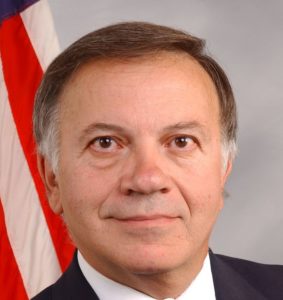
Tom Tancredo
The districts and states that are part of the Immigration Reform Caucus are the ones politically-oriented AR readers should think about. Largely white, these districts are probably immune from the daily effects of America’s crazy racial policies. High crime, mass Third-World immigration, bilingual-multicultural education, and affirmative action — all these things happen to other people in other places. Their top issues are likely to be local: education, roads, agriculture, etc. The War on Terrorism may have changed this only slightly.
If a candidate ran on local issues in such a district (while candidly acknowledging support for ending mass immigration and affirmative action) he might not suffer the same outrage or scrutiny as someone running in Manhattan. People in these white districts wouldn’t be sifting every speech for “code words.”
Once in Congress he could use his office to elevate racial issues just as Mr. Tancredo has done with immigration. Coming from a largely white district, he would not inspire the kind of voter backlash a politician in a “multicultural” district certainly would. If anything, a candidate from a safe district would be able to raise money from whites in districts that cannot field racialist politicians. He would become a fundraising darling, and could help other candidates. Jesse Helms, for example, raises considerable amounts of money from outside his district, and has supporters as far away as Hawaii.
Who is the ideal candidate? He should be middle-aged and mature — not just out of college. He should be married, and have established himself in a career or business. He should have no radical baggage, and he should have spent 20 years or so in the district. He should be a member of local civic groups like the Rotary Club, Lions Club, Knights of Columbus, the American Legion, etc. since they offer excellent community networks. (Tip O’Neill always said politicians should join these groups but not be leaders, because leaders get caught up in faction fights.)
The ideal candidate would be wealthy. Wealthy people know other wealthy people who are potential donors. He should be willing to spend a good chunk of his own money on the race, and be able to spend half his time fundraising. Money, of course, is a problem, but as the examples of campaign war chests in Wyoming and North Dakota show, the problem is not insurmountable. After the election the fun would begin.
Imagine a US senator holding a press conference on “The Crisis of the American IQ.” Or reading AR articles live on C-SPAN into the Congressional Record. Even if only two or three racialists were elected to Congress, they could start a White Congressional Caucus. Just one or two would cause plenty of headaches for the Beltway crowd. Most Americans are simply unaware of the issues that concern AR readers, so even if it started out small, a racialist group would have tremendous impact.
Republican leaders would try to get rid of these people, probably by running liberal primary challengers against them. However, if there were a healthy alternative conservative third party, the targeted Republicans could threaten to bolt the GOP. Such a threat might forestall a primary challenge altogether. It would set up a difficult choice for the Republican leadership, who could either accept these mavericks in their party or risk seeing an emerging nationalist third party take away votes and politicians from their right.
Party-switching is nothing new, and when the balance of the House or Senate hangs by only a few seats, a small group of Republican congressman threatening to switch to a nationalist party would give party leaders a lot to think about. If any sitting congressman or senator actually did switch to a nationalist third party, it would give that party strong national recognition. Success builds on success, and having even just a few national office holders gives a party credibility.
Pressure Groups
Any racial-realist candidate would need outside groups for support. Money is always the biggest need, and candidates need large blocs of identified voters to whom they can direct appeals. Racialist politicians would also need firm moral support to keep them from being swayed — especially once they had tasted the pleasures of office.
This, of course, brings us to the intersection of politics and the ongoing culture wars. A political action committee (PAC) devoted to racial issues could fight the public relations battle while it helped good candidates in any party. Several current political action committees offer models for racial nationalists to consider. “Bundling” is a technique used by some of the most effective PACs, and racial-national activists could pool their money the same way.
Until recently, the most an individual could give to a political candidate per election was $1,000, a figure established in the early 1970s and long out of date because of inflation. The recent increase to $2,000 still does not approach the increase in the costs of campaigning, and even a PAC can give no more than $5,000 in its own name. These small amounts of money don’t buy influence. A candidate who has to raise several million dollars need not pay that much attention to a source that provides only a few thousand. A “bundler” works as a middleman to raise money nationally for one specific issue, and then drops large chunks of attention-getting money into the campaigns of candidates who support the issue.
Bundling does not increase the amount an individual can give a candidate. The bundler has to be careful not to channel more than $2,000 from a particular donor to any candidate, but any donor who gave, say, $10,000 could have his contribution split into separate “bundles” for five or more different candidates. The ideological leverage of that money is greatly increased when the bundler gathers many contributions into a substantial sum and delivers it with a very specific message. Candidates send nice thank-you letters to people who give $2,000; they do a lot more than that when they get $50,000.
Steven Moore’s Club for Growth is a good example of a conservative bundler that supports only strong supply-siders. Its success is measured by the extent to which it is feared and loathed by establishment Republican leaders, which is considerable. The club may bundle $100,000 from individual donors and drop it on a candidate it likes. If that supply-side Republican makes it to office he will know who helped him get there, and if he ever goes wobbly on a tax cut or some other issue important to the Club of Growth, he will hear about it right away. The club also gets involved in funding primary campaigns for promising candidates, so anyone who double-crosses the club knows he could face the unpleasantness of a hard-fought primary.
The club describes itself this way: “We combine your contribution with those of other Club members, greatly magnifying the impact of your contribution. In our first election in 2000, Club members and our political committee spent $2.4 million to help get our kind of candidates elected. Since then, our membership has tripled.”
A lefty bundler is EMILY’s List, which stands for “Early Money is Like Yeast” (it helps the “dough” rise). This group (www.emilyslist.org), which funnels money to pro-abortion-rights Democrats, actually pioneered the concept of bundling. “We are huge,” says Ellen R. Malcolm, president and founder of the group. “We are the biggest fundraiser of “hard money’ other than the parties in the country.” In 1999-2000 the group raised $18 million, which it spent exclusively on pro-abortion feminists. EMILY’s List doesn’t just make campaign contributions. It mobilizes 68,000 supporters, does more polling than the Democratic National Committee, runs TV ads for and against candidates, staffs campaigns, and provides strategic advice.
Needless to say, it is possible to run for Congress or even for state house on national rather than regional issues, and to try to raise money from the whole country rather than just your district. It is possible, but it is hard. It is much easier if a candidate has a group doing the work for him. EMILY’s List doesn’t waste time on wealthy donors who are not feminists, and it doesn’t waste time on candidates who are not feminists.
EMILY’s List and the Club for Growth raise money from rich donors, but bundling works with small donations, too. Michael Farris, who was the Republican nominee for Lt. Governor of Virginia in 1993, started the Madison Project in 1994 to support homeschooling. Donations of $5, $10, and $25 go to the Madison Project, which bundles them and drops substantial sums into the coffers of sympathetic candidates.
Bundling can make a real difference. Candidates spend an enormous amount of time meeting with men’s church breakfasts, at League of Women Voters debates, going to Knights of Columbus meetings, seeking the endorsement of police unions, analyzing poll results, going over direct mail content, mulling advertising buys, walking door-to-door in the district, pepping up volunteers at campaign headquarters, and countless other things. A hefty donation from a bundler means that much less time spent franticly raising money.
At the same time, a bundler saves ideologically committed donors the bother of scouring the country for candidates to support. Donors can drop large checks into the bundler’s account, confident the money will go to the cause. There may not be any candidates in the donor’s own district who pay attention to the issues he cares about, but if he is willing to go outside his district, the bundler can help, and by combining small donations can crack the ideological whip far more effectively than the scattered individuals from whom the money came originally.
In effect, bundling is a way to inject national issues into any local race. The National Rifle Association and the Israel lobby have been doing it for years (see below). Other bundlers are following with their own issues, and racial issues are perfect for a national approach of this kind. David Duke raised a lot of money for his Louisiana races from outside the state, but did it in a clumsy, catch-as-catch-can way. A PAC/bundler devoted to straight racial issues would make life much easier for future candidates.
AIPAC and NRA
Non-white lobbying groups are well known but there have been effective white ethnic lobbies too: Irish, Italian, Polish, and especially Jewish. The most effective is the American-Israel Public Affairs Committee (AIPAC), which rallies Jewish support for Israel. It takes an openly ethnocentric, nationalist approach, and white nationalists should copy it.
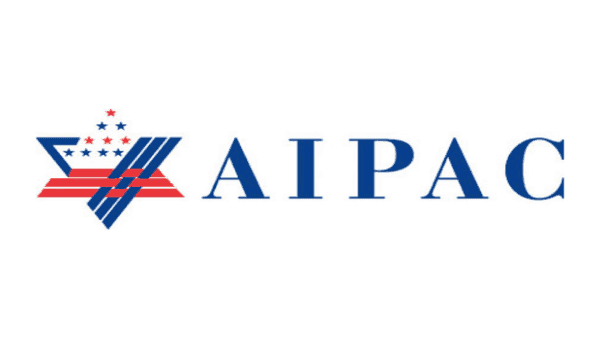
AIPAC has an annual budget of $19.5 million, a staff of 130 and 60,000 members. It has very effective people both in Washington and in the field to keep congressmen up to date and in line, and a large part of its budget is spent on lobbying. Part of its effectiveness is due to its dedication to a single issue. Its website is geared towards activism, including a “campus” section devoted to pro-Israel activities for college students. The site includes links to regional offices in all 50 states. AIPAC provides Congress with dependable and up-to-date information on Israel. AIPAC members donate money to campaigns, since AIPAC itself does not make endorsements or give money. American nationalists could learn from studying the Israel-boosters.
After the Israel lobby, the National Rifle Association (NRA) is probably the most successful promoter of a political cause. The amount of money the NRA raises and distributes in an election cycle — about $18 million a year — is small compared to the budgets of any federal agency teeming with liberal bureaucrats. Still, the NRA can rightly take credit for helping Republicans win control of Congress in 1994 (by mobilizing against the Democrats’ “Assault-Weapons Ban”) and keeping Al Gore out of the White House (by denying him the three crucial gun-friendly states of Tennessee, Arkansas, and West Virginia). Democrats have, for now, wisely dropped any big national push for gun control.
How does the NRA wield such power in the face of unrelenting media hatred and with so many organizations opposed to it? One answer lies in its single-issue focus. If the NRA tried to deal with both guns and tax reform, for example, it could not accomplish as much. Gun owners who want a flat tax would fight those who want a national sales tax.
Second, they have identified the voters who agree with them on this single issue, and can create something called “voter intensity.” NRA voters care much more about guns then the average voter does. By concentrating their firepower on pro-gun candidates, the NRA is an effective minority even if a majority of voters are vaguely against guns (AIPAC and all other effective advocacy groups do the same thing).
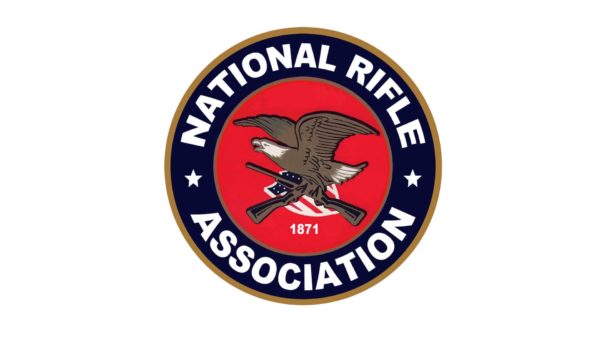
The NRA mobilizes its people by communicating directly with them: through phone banks, direct mail, newsletters, magazines, paid TV infomercials, etc. This informs members and, at the same time, bypasses the media filter. Voters who have been identified and informed by the NRA can resist the countervailing winds of the popular culture.
Finally, the NRA runs its own public relations efforts directed at the wider public, with slick spokesman like Wayne LaPierre, Charlton Heston, and Tanya Metaksa. It also runs a program in schools called the “Eddie the Eagle” GunSafe program. This helps soften and counter the media’s relentlessly negative image.
Immigration is probably the great, untapped issue around which an NRA-like organization could mobilize whites. European nationalists have tied immigration to crime and the rise of Islam, and have created a new dynamic in European politics.
There are other issues that might work for whites, but are probably not as good. One is crime, but many whites have already moved out of non-white areas to get away from it. The whites for whom crime is still a real problem may be too poor to move or too few to have an impact on politics. Affirmative action could be another galvanizing issue, but many see it as something that happens to other whites, not them. Also, there is already a national consensus building against it, and it may not survive the next Supreme Court challenge. Education could be an issue, since multiculturalism and bilingualism are part of the overall anti-white agenda, but the white middle-class families who move to the suburbs are by and large content with their public schools. If they aren’t, there are private schools.
What makes these issues tame compared to immigration, is that conservatives have been railing against crime, education, bilingualism, and affirmative action for years (granted, without much success). Conservatives do not acknowledge the specifically anti-white character of these things, but they oppose them. Even Linda Chavez and Ward Connerly battle affirmative action. US English opposes bilingualism and promotes official English. The Heritage Foundation and other conservative think tanks are happy to oppose affirmative action, bilingualism, crime and so forth. These issues and groups are not controversial among Beltway conservatives.
What these groups avoid is immigration. Notice how the “conservative” website Townhall censors immigration columns by Phyllis Schlafly and Paul Craig Roberts. Immigration is too hot for Townhall to handle. David Horowitz has written a book with the cheeky title Hating Whitey, but he is silent on Third-World immigration. Immigration is probably one of the few truly radioactive political issues left, probably because it constitutes the greatest threat to whites as a group, and is the most promising focus for raising white consciousness.
What would an immigration PAC with a nice budget do? For example, it could use telemarketing to identify all the voters who see immigration as their number-one issue. It would be easy to do this in a state like Alabama, for example, which has seven congressional districts. In the 2000 presidential election, there were 1,666,272 ballots cast in the state. This voter list could be pared down by various factors like age, race, location, primary vote, etc., and at 45 cents a call, a telemarketer could identify all the voters who favor immigration control for a total cost of around $585,000.
While that figure may seem high, some of the costs could be defrayed if the calls also made a fundraising pitch. Everyone says he hates these calls, but they work — especially the political ones. The public doesn’t so much mind political surveys because it likes to have its views heard. And fundraising calls work, too.
This immigration voter list could be matched to mailing addresses, and combined with direct mail, which could identify potential donors. The funds generated from the donor mailings could be used to mail to all the voters who are concerned about immigration. The PAC could find donors, voters and activists. It could raise money to support and oppose candidates. It could commission research and briefing papers. It could spend money to get out the vote, and buy radio and TV ads. It would do for immigration control what the NRA does for guns.
Third Parties
European parliamentary systems make it much easier to put dissenting views and candidates before the voters. Our winner-takes-all system largely shuts out third parties, but a racialist third party would be a tool for getting our message heard, rather than an attempt to replace one of the two major parties. If just one or two candidates were elected to office from a third party, it would be a great boost to nationalist issues. Note how the British National Party in Great Britain received worldwide attention from a shocked establishment after winning just three local council seats. At the same time, whenever third parties of either the left or the right gain any real support, the major parties co-opt their ideas, so at the very least, a nationalist party could nudge the GOP to the right.
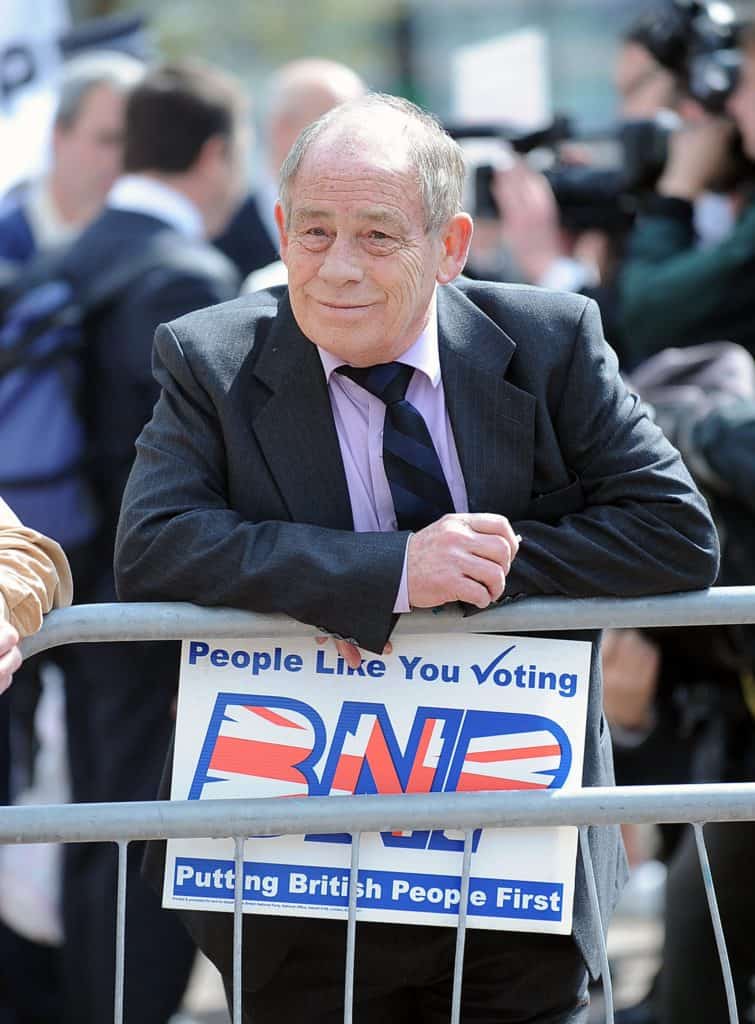
Credit Image: © National News / ZUMApress.com
In the United States, political movements have historically succeeded by taking over existing political institutions, instead of trying to invent new ones. The Democratic Party was once lead by Southern segregationists and is now lead by former 1960s radicals. The Republican Party was once lead by Eastern establishment patricians. Even American third parties historically succeed by having their ideas adopted by one of the major parties.
There are already quite a few conservative “third” parties in this country: the Reform Party, Howard Phillips’s Constitution party, the Christian Party, the Constitutionalist Party (which seems to be an imitation of the Constitution Party), and the Southern Party. There is also the Southern Independence Party, which split from the Southern Party, and even an Independent American Party, which is an offshoot of George Wallace’s American Independent Party. Which party should nationalists try to adopt as a vehicle for their ideas?
Many people think the Reform Party is the best candidate, but it is not. Pat Buchanan and his brigades tried a hostile takeover in 2000, and have little to show for it. What remains of the Reform Party ultimately belongs to Ross Perot and not “the people,” as he likes to claim. The Reform Party, like its leader, lacks a coherent view of America and its problems, and few party members thought in racial terms during Mr. Perot’s first run in 1992. Their main complaints were the deficit, and some vague notion of ending the “bickering in Washington.” In 1996, the party promoted a protectionist message without any view on affirmative action, multiculturalism, or immigration.
When Mr. Buchanan tried to take over the party, Mr. Perot threw up one roadblock after another, and tacitly approved the breakaway candidate, John Hagelin of the Natural Law Party, who advocates such things as transcendental meditation for prisoners. In the end, Mr. Buchanan and Mr. Hagelin fought each other up until Election Day for ballot space, and the party fizzled. The question shouldn’t be whether nationalists can take over the Reform Party, but how they can get the Reform Party’s voters. An American nationalist movement could attract Reform Party voters by adopting Mr. Buchanan’s “America First” rhetoric, precisely because it strikes the kind of nationalist tone that resonates with them, while at the same time terrifying the multi-culti elites.
If nationalists try to use an existing party rather than start yet another, Mr. Phillips’s Constitution Party (CP) appears to be the best choice. (Anyone who still has hopes for the Reform Party might note that this spring, many of the Reform Party leaders in California and Maryland defected to the CP.) In the most recent elections, the CP was on the ballot in 43 states, and Mr. Phillips’s supporters managed to make him eligible as a write-in candidate in six other states. While this is short of ideal, it is a much better political infrastructure than any other third-party alternative on the right. And often, sympathetic third parties end up endorsing the CP candidate rather than fielding one of their own (the American Independence Party does this).
The CP calls for a moratorium on immigration and strong protection of the borders. It opposes affirmative action, bilingual education, and foreign aid, and would abolish the Department of Education. Joseph Sobran, who spoke at the 1994 American Renaissance conference, is a former Vice Presidential candidate for the Constitution Party. This is yet another indication of why the CP could be a good fit for those tired of the status quo; it shows that the CP and Howard Phillips are open to controversy.
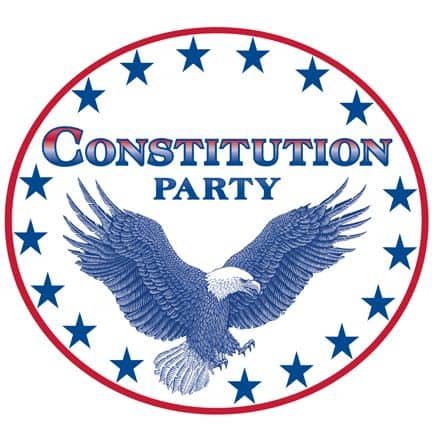
But what about the rest of the party’s platform? Some people would object to its protectionism, but what is most striking about it is its religious appeal. This could be more than a minor inconvenience, but it is also a challenge and potential model for action.
What could be done to make the CP a vehicle for real nationalism? First, it should not jettison the traditional values of the religious right, but it could attract new support with a new set of nationalist issues — or rather, by emphasizing issues already in its platform. There is sure to be a strong vote for a candidate who will run with racial-nationalist issues; otherwise Pat Buchanan’s The Death of the West would not have stayed on the bestseller list week after week.
Would Howard Phillips fight against a new direction for his party or would he welcome a new dose of energy and commitment? Some racialists and some on the religious right may view each other warily, but the circle can be squared with a little give and take. The religious traditionalists should be reminded that the West’s historic faith takes a rather different view of racial issues than today’s politically correct churches. Likewise, atheists and agnostics shouldn’t be put off by explicit talk of traditional American values, including spiritual ones. Both groups could find synergy by working together. Also, a political movement that can get the imprimatur of America’s traditional clergy — or at least some of it — will be more respectable in the eyes of the public than one that gets total condemnation. Jean-Marie Le Pen’s National Front has fused traditionalist Catholics with “pagan” whites to build a movement that is stronger than each group alone.
For blacks too, preachers in the pulpit and activists in the street make an effective combination, not just for blacks themselves but for the way others see their movement. Racial activists do not have to agree with every sermon their ministers preach in order to enjoy the combined effectiveness of working together.
A fusion of racial/cultural issues would attract much of the hard-hat, blue-collar working-class. These are people who like to hunt and drink beer, and don’t think very much about abortion, but don’t like racial preferences or Mexican neighbors or Osama bin Laden. There are plenty of white women who secretly think the same way, or will go along with a man who does.
Some racialists might argue in favor of a single-issue, immigration-reform party that had the combined support of VDARE, FAIR, AICF, Numbers USA, and all the grass-roots immigration control groups, but I do not think that would be effective. With nothing to say on any other issue, the media would immediately label it the new “Know-Nothing Party.” Also, a single-issue party gives candidates no basis on which to face the local issues of a race for county commissioner, village trustee, or school board. The Constitution Party would have a more fleshed-out platform, which could be given a distinctly racialist/nationalist flavor.
This is important because racialists often seem to fantasize about trying to go for the top offices. It is at every level, from school boards to state legislatures to the White House, that nationalist office-holders can be critical in repealing anti-white policies. At virtually every level, there is something to tackle, be it multicultural/anti-Western curricula, bilingualism, lax criminal justice, coddling of illegal immigrants, etc.
Good as it is, the Constitution Party does need a new name. It only confused people when it switched recently from US Taxpayers Party to Constitution Party. What does a Constitution Party member stand for? The ACLU’s Constitution or Robert Bork’s? A better name would be the Conservative Party, since people would know right away what it stood for.
Something else the party needs is a high-profile national candidate. For years, Howard Phillips tried to woo Pat Buchanan as his standard bearer. Mr. Buchanan stayed within the Republican Party, and then went to the Reform Party because it had money. The current Constitution Party doesn’t have much money, and could use a big infusion to give it oomph, but it is more philosophically coherent than the Reform Party ever was.
Unfortunately, there is no one on the horizon who would make a credible nationalist presidential candidate. Perhaps journalist Ann Coulter could be the American answer to Australia’s firebrand, Pauline Hanson (though she meets none of the criteria set out earlier for the ideal candidate). She may not address racial issues in the way AR readers would like, but she is hated by exactly the same people who hate AR. She is a best-selling author, syndicated columnist, and has easy access to the airwaves, so she wouldn’t have any problem with name recognition at least.
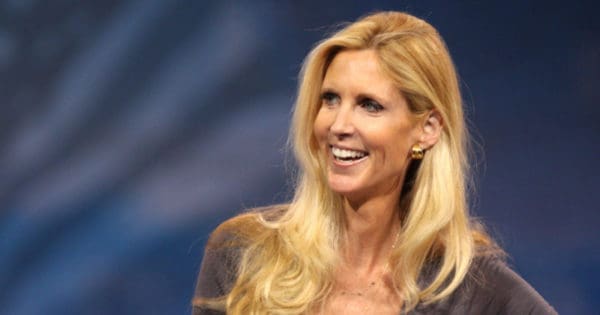
Ann Coulter
But far more important than speculating about ideal candidates is building institutions to support them. Racialists, nationalists, and traditionalists must not wait for a leader to descend from on high and lead them to victory. The hard work is building the institutions, and once they are good enough the candidates will come.
What would be the effect of a candidate with high name recognition running as a candidate of a nationalist CP? A useful analogy is the effect Ralph Nader had on the otherwise moribund Green Party. Some in the party may have preferred a different candidate, but his name recognition is high, he gets free media, and just having him on the ticket put the Green Party on the map.
What would be the effect of a high-profile run for the CP? First it would energize grass-roots party activists who would probably succeed in getting the party on ballots in the remaining seven states. Second, it would help strengthen the infrastructure of the CP so that even after the big-name nationalist left the stage, it would still be in a position to act as a check on squishy Republicans. This is what Mr. Nader has done (and is doing) for the left via the Green Party.
Third, it would mean Republicans couldn’t take conservatives for granted. It doesn’t seem to occur to the Republicans in Name Only (RINOs) that conservatives might sit out an election or vote only for local candidates and ignore the unacceptable names the party puts up at the head of the ticket. If a nationalist candidate were to appear the RINOs would panic. The media would probably give the candidate a chance to get his message out, if only to hurt Mr. Bush and thereby help elect a Democrat.
Another reason to launch a political jihad — as early as 2004 — would be to build a new institution for conservatives, nationalists and racialists. If the movement could energize a new group of activists as Barry Goldwater’s run in 1964 did, it would reap many long-term rewards. It would bring issues to the public the establishment prefers to ignore. It would develop a new team of battle-hardened veterans who would contribute enormously to the movement. And it would thwart the RINOs who say we have “nowhere else to go.”
There can be great value in what some would dismiss as “obstructionist” campaigns. Sometimes there is no other way to bring crucial issues to the fore. Jean-Marie Le Pen was essentially running an obstructionist campaign against Tweedle-dum and Tweedle-dee candidates. Mr. Le Pen’s chances of winning the presidency were slim to none, but his “obstructionism” jolted the system and ended the political career of the Socialist, Lionel Jospin.
Many Americans simply don’t know what immigration is doing to their country, and anything that stirs them from somnolence is valuable. If there were rumblings of a serious nationalist campaign I suspect the Bush team would ditch the idea of amnesty for illegals. If exploited properly, the amnesty proposal could be a real weakness for the President. The public’s support of racial profiling after September 11, and the establishment’s waffling over it could provide another opening. Besides getting our ideas to the general public, there would be much to be gained in terrifying the RINOs, not to mention the sheer fun of making a lot of trouble. The marriage of racial and traditional conservative issues would make a very potent party of the right that was a constant challenge to conventional wisdom. As time passes, all the issues conservatives care about will emerge in unmistakably racial terms. It is our job to make race explicit, to make it increasingly clear that a vote for a conservative third-party candidate is a clear challenge to the racial status quo.
Weak as they are, conservative third parties may already be hurting Republicans in federal elections more than liberal third parties are hurting Democrats. In the July issue of Chronicles, Greg Kaza notes that in 2000 Pat Buchanan held the balance of power in five states: Florida, Iowa, New Mexico, Oregon, and Wisconsin. He also writes that Libertarians cost the GOP several Senate seats in the West, and mentions congressional districts where Democrats were elected because conservative third-party candidates took votes from Republicans. He also lists several Democratic members of Congress who he says were elected because Republicans ignored hard-right issues: Jane Harman of California, Elizabeth Furse of Oregon, Jay Inslee of Washington, and John Tierney of Massachusetts.
Local Politics
Most white nationalists are not wealthy and most cannot run for office. How can they help a nationalist political movement? One step is to get involved in existing political parties. Within the Republican Party there are men’s groups, women’s groups, student groups and so on, all of which have elected positions that can be taken over. There is also a group called the National Federation of Republican Assemblies (NRFA), which has chapters in several states, and is geared toward pulling the Republican Party further to the right. The NRFA does not now take stands on racial issues, but there is no reason why that can’t change. In some states, a person can be a member of both the Republican Party and CP. Where dual membership is not possible, helping build the local CP organization may provide the best opportunity to advance the nationalist movement.
There are many leadership positions in the party structures themselves, from entry-level precinct captain to national committee chairman. The average county organization for a political party has a chairman, vice-chairman, treasurer, and secretary — all elected. Typically, these organizations are begging for people to take these jobs. The religious right began filling these positions because they were willing to tolerate long, boring meetings and deal with a variety of personalities for the sake of their cause.
White nationalists must be prepared to do the same. Those who are unfamiliar with the nuts and bolts of politics will get an education in how the process works. Needless to say, having sympathetic members within the organization means invaluable support for white nationalist candidates. Insiders help direct funds, organize volunteers, issue press releases, and influence party members with news and updates. Party officials also help hammer out party platforms. A lot of hard, boring work goes into winning these positions but it can pay dividends over the long haul.
Whenever insurgent movements take over existing institutions, people’s feathers get ruffled, so it takes persistence and dedication. A group like the Council of Conservative Citizens (CCC), which deals bluntly with race, could alert members to upcoming meetings of local parties. CCC members and allies could run for party positions and begin the “long march through the institutions,” the way the anti-white left took over the Democratic Party.
We Owe it . . .
Taken together, an alternative nationalist/traditionalist third party, a political bloc within the Republican Party, and a Political Action Committee along the lines of the NRA or Emily’s List would educate voters, get candidates elected, and force debate on taboo issues. If these groups worked in concert and managed to get just a few politicians elected to federal office, it would dramatically change the terms of debate. Imagine a few politicians with the nerve to ask black and Hispanic activists why their groups’ crime rates are so high — and why they choose so many white victims. Imagine a group of politicians who didn’t cave in to the multiculturalist demands for white guilt, but instead gave ringing defenses of Western Civilization? Imagine national political figures who boldly took the view that the West is not just an idea but has an ethno-cultural component that connects whites to their civilization. Imagine a few white politicians reminding people that group differences in IQ explain group differences in outcome far better than any “legacy of racism.”
Such nationalists might create a kind of racial perestroika. Of course, today’s liberal totalitarians would try to stop it, just as the Soviet Communists did. Changes in the Soviet Union would not have occurred without Soviet dissidents like Sakharov, Solzhenitsyn and Yeltsin, and we have to play the same role.
We owe it to our history, our families, and our descendants to put these ideas into action. Others may find better Bible passages, but I think Psalm 28, Verse 9, can serve as a benediction to inspire both racial realists and religious traditionalists as they go forth to build a truly nationalist political movement: “O save your people, and bless your heritage; be their shepherd, and carry them forever.”

